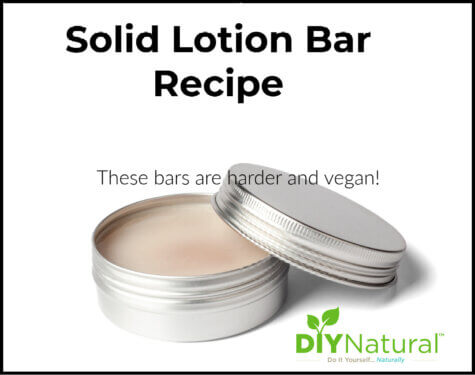
Let’s take a look at Shea Butter vs Cocoa Butter vs Mango Butter, and others, to see which butter is best for which DIY Natural projects.
When it comes to making DIY projects, many of them contain butter of some kind. No, not dairy butter, but other vegetable butters. Let’s take a look at these butters to see which one will work best for your project.
Shea Butter vs Cocoa Butter vs Mango Butter
There are three butters that people use more than others in DIY projects: Shea Butter vs Cocoa Butter vs Mango Butter. There are others, but these three are more readily available. Each exists in different forms and most are available in natural, raw, and deodorized. Colors can vary as well.
Different Properties of Each Butter
Each type of butter has different properties, making them appropriate for different types of DIY projects.
Cocoa Butter
- Extracted from cocoa beans
- Antioxidants may help fight signs of aging
- Moisturizing, and penetrates the skin easily
- A low melting temperature, around 94°F
- Natural raw butter smells like cocoa
- Solid at room temperature, brittle when cool, breaks or cuts easily
- Mixes well with most other oils
- Contains little or no theobromine or caffeine
- Smells amazing!
- Available in natural or deodorized
- Readily available
- Can be useful in lip balms, body butters, soaps, etc.
- Long shelf life, 2-5 years
- You can freeze it for up to a year
(Find high-quality cocoa butter here.)
(Check out this cocoa body butter recipe.)
Shea Butter
- Extracted from seeds of the shea tree
- Moisturizing vegetable oil
- Available in raw, natural, and bleached
- Raw shea butter is ivory/gray in color, natural is yellow, and if they bleach it’s white
- Used as far back as Ancient Egypt
- Melts on contact with the skin
- Solid at room temperature
- Softer than cocoa butter when solid
- Blends well with other oils
- Must melt at lower temperatures because it turns grainy if you melt at higher temperatures
- Absorbs into the skin well
- It may help reduce inflammation
- Can be used in lip balm, creams, body butters, soaps, etc.
- Shorter shelf life, up to 12 months
- Can be frozen for up to a year
(Find high-quality shea butter here.)
(Check out our shea butter recipes.)
Mango Butter
- Expressed from the seeds of the mango tree
- Moisturizing and offers minimal protection from the sun
- It may help ease dry skin conditions
- It may help slow down the degeneration of skin cells
- Softer than shea and cocoa butter at room temperature, but still solid
- Creamy texture
- Blends well with other oils
- Little to no odor
- Nutrient-dense, contains vitamins, minerals, and antioxidants
- Makes an excellent hair conditioner because it absorbs quickly
- Use in lip balms, body butters, creams, and soaps
- Short shelf life, up to 4-6 months
- Can be frozen for up to a year
(Find high-quality mango butter here.)
Shea Butter vs Cocoa Butter vs Other Butters
In addition to the more common butters, there are other vegetable or plant-based butters on the market. One of them is Kokum Butter. Because Kokum Butter is a very hard butter, it can be used in lip balms without wax as a solidifier. It has a long shelf life due to the high amounts of antioxidants. It can be used in place of most other butters but can be harder to find. (Find kokum butter here.)
Sal Butter is a harder butter that can also be difficult to find. It is very good at moisturizing the skin and mixes well with other oils and butters. (Find sal butter here.)
Tucuma Butter comes from Brazil and is another excellent moisturizing butter. (Find tucuma butter here.)
There are many other obscure butters on the market, so you’ll want to check out each one individually to see which may be best for you.
Words of Caution
When deciding between shea butter vs cocoa butter, or other butters, if you have any allergies to chocolate, mangoes, or anything else from which these butters are derived, it is best to use another product.
In some cases, the butter may not contain (or contains very low amounts of) the compounds that cause the allergies, but it’s still best to choose something else. (Mangoes contain urushiol, which is the same irritant found in poison ivy, but mango butter does not contain this substance.)
The same warning goes for your pets. Cocoa butter may have a very low amount of theobromine, but I still wouldn’t recommend using it with dogs.
Another thing to watch for is the actual content of the butter, or oil, in the butter itself. I recently saw an ad for coffee butter and decided to check the label for other ingredients. It was actually hydrogenated soybean oil mixed with a small amount of coffee oil. Probably not as beneficial as cocoa butter or shea butter! So be sure to check the ingredients to know exactly what you’re getting.
Using Your Butters
Most of the time these butters are interchangeable in DIY recipes. When it comes to a harder butter, you may need to reduce the amount of wax or omit it completely.
Don’t be afraid to experiment. I have three containers of deodorant sitting in my bathroom right now that are all made with different butters and waxes. I’ll try them all until I figure out what I like best.
Finally, butters make a fantastic addition to homemade soap. Most butters, like shea butter, contain a fairly high amount of unsaponifiable matter. This means that the butter won’t be used by the lye, so it remains a moisturizing butter. However, if you are using butter in soap making, be sure to melt it with your oils when you measure them out. Don’t try to add it at the trace because this will cause clumping.
What is your favorite butter to use in DIY projects? Let us know!
*******



Hi I’ve been wanting to make mango butter extract from mango but don’t know how
Just so people know, if you have allergies to latex, you might have problems with aloe vera, cocoa butter and shea butter which all have latex in them. I have found this out through my research and testing on my own skin because I am allergic to latex.
would also love that body butter bar recipe. and does anyone have a recipe for lip gloss, you know the kind that stays liquid and doesnt harden? thanks to all!
And for the rest of you, I can give you my body butter recipe. It’s simple. 1 part beeswax, 1 part shea butter and 1 part oil. The part can be anything from a tablespoon to a cup. The butter can be any butter, shea, cocoa or mango, and the oil can be any oil, almond, grape seed, coconut or sunflower. Melt them all down, mix and let them cool. That’s all! You can add essential oils or use infused oils like calendula, but the main part of the body butter remains the same.
Oops sorry for my typos! I meant to say soap instead of soup when I said….. “so much easier than SOAP making…. not soup making! LOL!! And: I meant to say: the Body Butter Bar recipe I use doesn’t even require weighing its oils! (There must be something to the combination of oils that is used! Maybe you could tell me/us why it works so well!) So it makes it super easy to make.
I’ll try sending the recipe in a little later this week. I don’t have time today!
Can I have the Body Butter Bar Recipe please instead of the tedious soap bar making . Thanks – Celine
I am a soap maker and use the hot process method. I have recently starting making a body butter bar bar that doesn’t requite weighing the its oils It’s virtually fool-proof and I don’t know where I found it or for whom I should credit. I think I may found it on Pin-terest! I can send the recipe to you if you’re interested.
I am new to making body butter bars, but find them so much easier than soup making what with all the precautions with lye and the weighing and mixing of oil and knowing ones sap values etc.
So I loved your helpful info on the body butters! Thanks so much!
Cathy
I would love to try your body butter recipe.
With thanx
Sheila
I would love to try the recipe.
Hey Cathy! I’m also a soap maker, cold process mainly. I dabble a bit in hot process and liquid soap. I’ve made body butter before and I, too, prefer recipes that are measured rather than weighed. It simplifies things so much! I’d like to see your recipe and I can see a lot of others are interested too. Thanks so much!
What are the sources you use to purchase the butters?
I am wanting to blend some homemade lotions/creams for winter and summer so I can avoid things that irritate my skin.
Dr Adorable-organic butters
Hi Barbara! Beth is right, Dr Adorable is one good brand. There are links for each butter on others that are good too. And my personal favorite is Essential Depot.